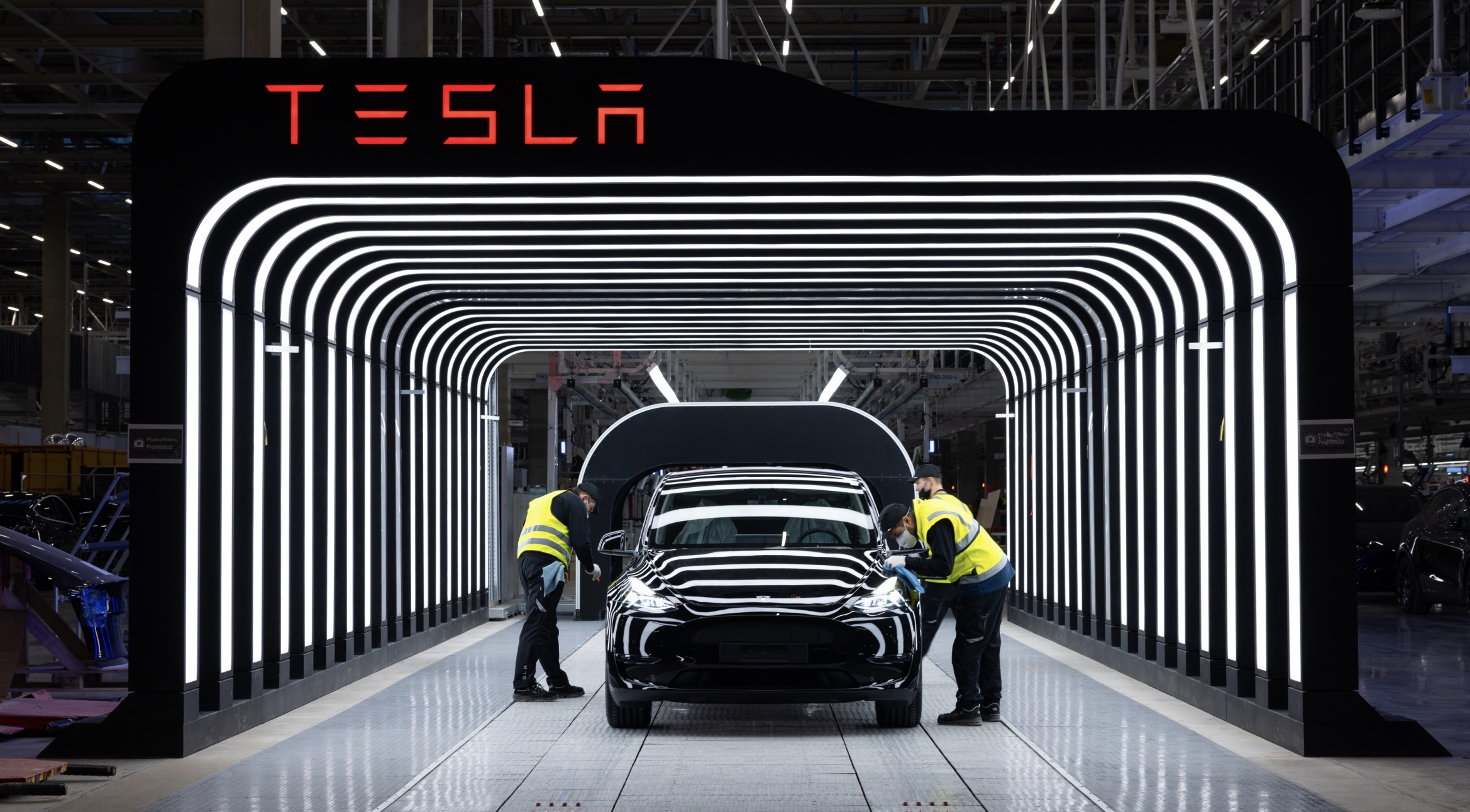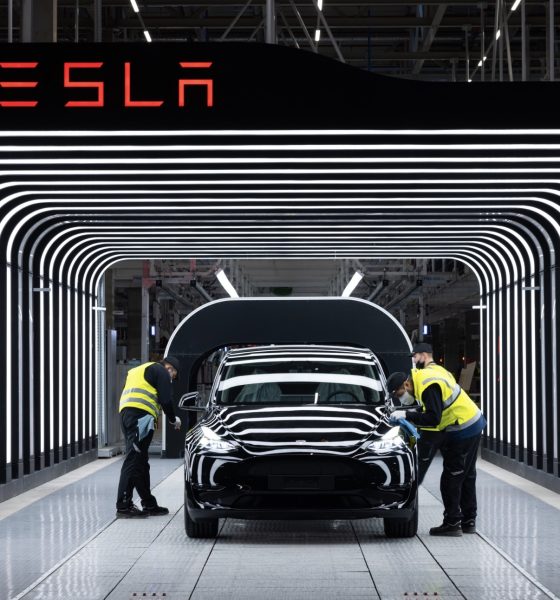

Investor's Corner
Tesla (TSLA) Q1 2022 earnings results: Another beat with 19% operating profit and margin
Tesla’s (NASDAQ:TSLA) first-quarter 2022 earnings saw the company post a challenging yet impressive quarter. The results, which were discussed in the Q1 2022 Update Letter, were released after the closing bell on Wednesday, April 20, 2022.
Tesla was impressive in the first quarter, with the company producing a total of 305,407 vehicles and delivering 310,048. The lion’s share of these numbers remains the Model 3 and Model Y, though Model S and Model Y output has improved over previous quarters.
The following is a quick overview of Tesla’s Q1 2022 results.
Revenue
Tesla posted total revenues of $18.756 billion with a gross profit of $5.460 billion. In comparison, analysts expected Tesla to post a revenue of $17.8 billion. Tesla cited a growth in vehicle deliveries, increasing average selling price, and growth in other parts of its business as a source of its revenue growth.
Earnings Per Share
Tesla posted non-GAAP earnings per share of $3.22 per share. This is notably higher than the Street’s estimates, which expected that the electric vehicle maker would be posting an EPS of $2.27 per share.
Profitability
Tesla posted $3.6B GAAP operating income and an impressive 19.2% operating margin in the first quarter, as well as GAAP net income of $3.3B and non-GAAP net income (ex-SBC1 ) of $3.7B in Q1 2022. Overall, the company posted GAAP Automotive gross margin of 32.9% in the first quarter.
Cash
Tesla noted that its quarter-end cash, cash equivalents and short-term marketable securities increased sequentially by $0.3 billion to $18.0 billion in the first quarter. The company added that its total debt excluding vehicle and energy product financing fell to less than $0.1B at the end of Q1 2022.
Vehicle Factories
Tesla noted that the first quarter saw several challenges from the global supply chain, transportation, labor, and manufacturing. These challenges ultimately limited the company’s ability to run its factories at full capacity. This was most evident in Giga Shanghai, which was hit by China’s Covid lockdowns. Fortunately, Tesla’s Giga Berlin-Brandenburg and Giga Texas are ramping together with the Fremont Factory.
Battery Technology
Tesla noted that diversification is the name of the game with battery and powertrain tech, as evidenced by the company’s decision to use cobalt-free LFP batteries for its standard range vehicle line.
“Diversification of battery chemistries is critical for long-term capacity growth, to better optimize our products for their various use cases and expand our supplier base. This is why nearly half of Tesla vehicles produced in Q1 were equipped with a lithium iron phosphate (LFP) battery, containing no nickel or cobalt. Currently, LFP batteries are used in most of our standard range vehicle products, as well as commercial energy storage applications. As a result of our energy efficient motors, a Model 3 with an LFP battery pack can still achieve a 267-mile EPA range,” Tesla wrote.
Tesla Energy
Tesla Energy actually showed quite a lot of growth in the first quarter, with deployments increasing by 90% year-over-year to 846 MWh. This was driven by strong Powerwall deployments. Solar deployments, however, decreased by 48% in Q1 to 48 MW, due to import delays on certain solar components.
Following is Tesla’s Q1 2022 Update Letter:
TSLA-Q1-2022-Update by Simon Alvarez on Scribd
Disclaimer: I am long TSLA.
Don’t hesitate to contact us with news tips. Just send a message to simon@teslarati.com to give us a heads up.

Investor's Corner
Tesla stock closes at all-time high on heels of Robotaxi progress

Tesla stock (NASDAQ: TSLA) closed at an all-time high on Tuesday, jumping over 3 percent during the day and finishing at $489.88.
The price beats the previous record close, which was $479.86.
Shares have had a crazy year, dipping more than 40 percent from the start of the year. The stock then started to recover once again around late April, when its price started to climb back up from the low $200 level.
This week, Tesla started to climb toward its highest levels ever, as it was revealed on Sunday that the company was testing driverless Robotaxis in Austin. The spike in value pushed the company’s valuation to $1.63 trillion.
Tesla Robotaxi goes driverless as Musk confirms Safety Monitor removal testing
It is the seventh-most valuable company on the market currently, trailing Nvidia, Apple, Alphabet (Google), Microsoft, Amazon, and Meta.
Shares closed up $14.57 today, up over 3 percent.
The stock has gone through a lot this year, as previously mentioned. Shares tumbled in Q1 due to CEO Elon Musk’s involvement with the Department of Government Efficiency (DOGE), which pulled his attention away from his companies and left a major overhang on their valuations.
However, things started to rebound halfway through the year, and as the government started to phase out the $7,500 tax credit, demand spiked as consumers tried to take advantage of it.
Q3 deliveries were the highest in company history, and Tesla responded to the loss of the tax credit with the launch of the Model 3 and Model Y Standard.
Additionally, analysts have announced high expectations this week for the company on Wall Street as Robotaxi continues to be the focus. With autonomy within Tesla’s sights, things are moving in the direction of Robotaxi being a major catalyst for growth on the Street in the coming year.
Elon Musk
Tesla needs to come through on this one Robotaxi metric, analyst says
“We think the key focus from here will be how fast Tesla can scale driverless operations (including if Tesla’s approach to software/hardware allows it to scale significantly faster than competitors, as the company has argued), and on profitability.”

Tesla needs to come through on this one Robotaxi metric, Mark Delaney of Goldman Sachs says.
Tesla is in the process of rolling out its Robotaxi platform to areas outside of Austin and the California Bay Area. It has plans to launch in five additional cities, including Houston, Dallas, Miami, Las Vegas, and Phoenix.
However, the company’s expansion is not what the focus needs to be, according to Delaney. It’s the speed of deployment.
The analyst said:
“We think the key focus from here will be how fast Tesla can scale driverless operations (including if Tesla’s approach to software/hardware allows it to scale significantly faster than competitors, as the company has argued), and on profitability.”
Profitability will come as the Robotaxi fleet expands. Making that money will be dependent on when Tesla can initiate rides in more areas, giving more customers access to the program.
There are some additional things that the company needs to make happen ahead of the major Robotaxi expansion, one of those things is launching driverless rides in Austin, the first city in which it launched the program.
This week, Tesla started testing driverless Robotaxi rides in Austin, as two different Model Y units were spotted with no occupants, a huge step in the company’s plans for the ride-sharing platform.
Tesla Robotaxi goes driverless as Musk confirms Safety Monitor removal testing
CEO Elon Musk has been hoping to remove Safety Monitors from Robotaxis in Austin for several months, first mentioning the plan to have them out by the end of 2025 in September. He confirmed on Sunday that Tesla had officially removed vehicle occupants and started testing truly unsupervised rides.
Although Safety Monitors in Austin have been sitting in the passenger’s seat, they have still had the ability to override things in case of an emergency. After all, the ultimate goal was safety and avoiding any accidents or injuries.
Goldman Sachs reiterated its ‘Neutral’ rating and its $400 price target. Delaney said, “Tesla is making progress with its autonomous technology,” and recent developments make it evident that this is true.
Investor's Corner
Tesla gets bold Robotaxi prediction from Wall Street firm
Last week, Andrew Percoco took over Tesla analysis for Morgan Stanley from Adam Jonas, who covered the stock for years. Percoco seems to be less optimistic and bullish on Tesla shares, while still being fair and balanced in his analysis.

Tesla (NASDAQ: TSLA) received a bold Robotaxi prediction from Morgan Stanley, which anticipates a dramatic increase in the size of the company’s autonomous ride-hailing suite in the coming years.
Last week, Andrew Percoco took over Tesla analysis for Morgan Stanley from Adam Jonas, who covered the stock for years. Percoco seems to be less optimistic and bullish on Tesla shares, while still being fair and balanced in his analysis.
Percoco dug into the Robotaxi fleet and its expansion in the coming years in his latest note, released on Tuesday. The firm expects Tesla to increase the Robotaxi fleet size to 1,000 vehicles in 2026. However, that’s small-scale compared to what they expect from Tesla in a decade.
Tesla expands Robotaxi app access once again, this time on a global scale
By 2035, Morgan Stanley believes there will be one million Robotaxis on the road across multiple cities, a major jump and a considerable fleet size. We assume this means the fleet of vehicles Tesla will operate internally, and not including passenger-owned vehicles that could be added through software updates.
He also listed three specific catalysts that investors should pay attention to, as these will represent the company being on track to achieve its Robotaxi dreams:
- Opening Robotaxi to the public without a Safety Monitor. Timing is unclear, but it appears that Tesla is getting closer by the day.
- Improvement in safety metrics without the Safety Monitor. Tesla’s ability to improve its safety metrics as it scales miles driven without the Safety Monitor is imperative as it looks to scale in new states and cities in 2026.
- Cybercab start of production, targeted for April 2026. Tesla’s Cybercab is a purpose-built vehicle (no steering wheel or pedals, only two seats) that is expected to be produced through its state-of-the-art unboxed manufacturing process, offering further cost reductions and thus accelerating adoption over time.
Robotaxi stands to be one of Tesla’s most significant revenue contributors, especially as the company plans to continue expanding its ride-hailing service across the world in the coming years.
Its current deployment strategy is controlled and conservative to avoid any drastic and potentially program-ruining incidents.
So far, the program, which is active in Austin and the California Bay Area, has been widely successful.








